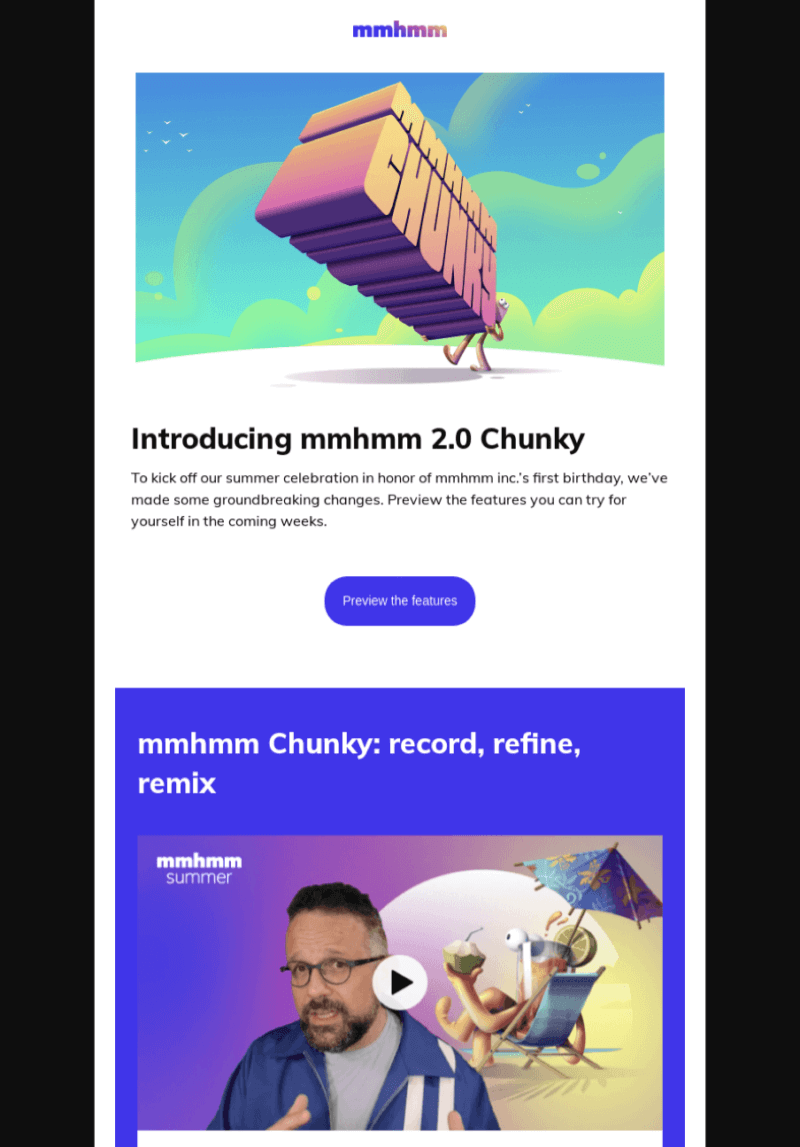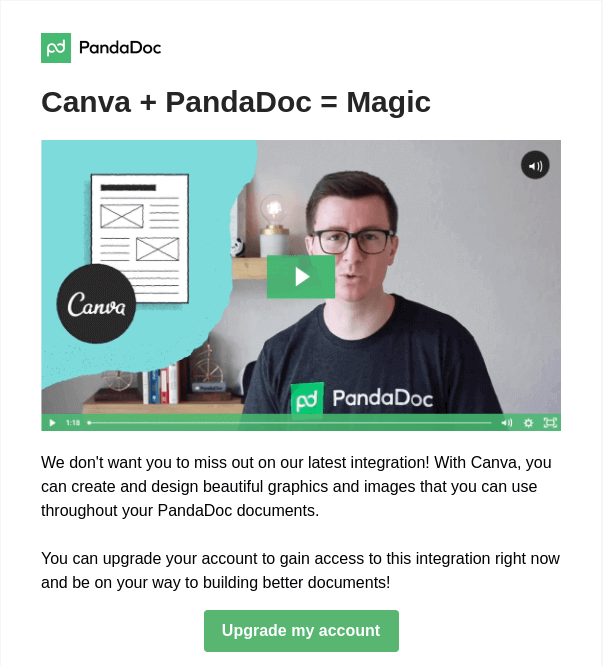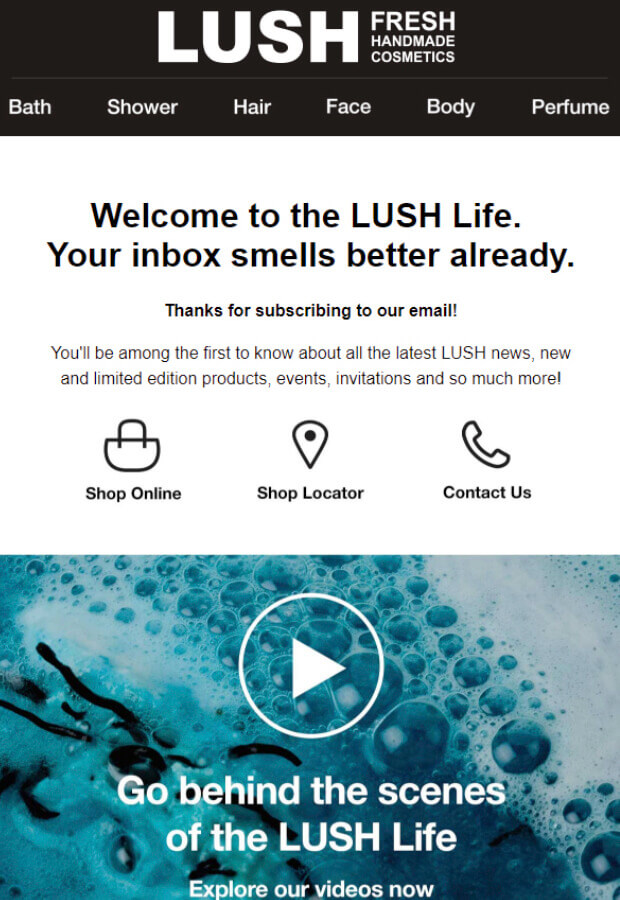There is no doubt that emails are one of the most popular methods of communication, and they have become an integral part of online businesses.
But the problem is that emails today have a decreasing rate of Conversion Rate (CR). A study by Barilliance found that in 2018 the average conversion rate peaked at 18.49% but decreased to 15.22% in 2021.
This means marketers receive fewer responses to the messages they send out. As a result, your email marketing campaign may not perform well as it would have a few years ago.
But don’t worry!
There are solutions to this problem – one of which is to include videos in your emails.
By using video in email, businesses can enhance their reach and strengthen relationships with their audience. It also provides a more immersive experience, leading to higher engagement, increased sales, and greater brand loyalty.
This article will discuss video email marketing, its benefits to your business, and how you can incorporate it into your campaigns.
What is Video Email Marketing?
The term “video email marketing” describes a technique that combines the best of two worlds: email and video.
Video email marketing has become a popular method for companies to reach their audience because it combines the effectiveness of email with the power of video.
It’s a new way to reach customers, allowing you to offer product promotions, coupons, and deals; announce new company offerings, or advertise an event.
Video email marketing is popular because it grabs and keeps viewers’ attention, as well as engages them when they’re most likely to make purchases.
What are the Benefits of Video Email Marketing?
Video email marketing is a powerful tool for communicating with your audience. It’s a great way to show off your brand and engage with customers, which can increase sales.
Let’s look at just some of the benefits of using video email marketing:
1. Increases Open Rate and Click-through Rates
A company that sends video emails to its customers can significantly increase the number of people who open their emails and click on links in the body of the email.
Video email has been shown to increase the open rate by 6%. So if you send out 10,000 emails with a video message, you’ll get an additional 600-800 people opening up your message. That’s a lot more eyes on your brand.
2. It Grabs Users’ Attention
A picture is worth 1,000 words, but a video is worth 1 million.
Video emails have been shown to have higher open rates than traditional text-only emails because they’re more engaging and exciting to watch.
When someone receives a video email from you, they know they will get more than just another text-based email from an unknown sender.
They will learn proper and valuable information from you, which means they’ll be more likely to keep watching until the end of the video – even if it is only 5 seconds long.
3. Video Increases Social Sharing
Video is the most effective way to get your message out there. It’s also the most shareable medium, offering a richer experience than written content alone.
When viewers watch your video, they feel like they’re more involved in the action and can connect more deeply with your brand.
This means that your chances of getting recipients to click on a video attachment in an email are higher than if you sent other types of content.
4. Information can be Absorbed Quickly
When you’re watching a video about something, your brain processes it differently than when you read about it in text or hear about it in audio.
When you watch a video, you can take in more information and process it more effectively.
The video contains details that will be valuable to you, including how the speakers look and sound and what they have to say. You’ll remember the information more easily when you take in all of these aspects.
5. Creates Trust and Builds Credibility
A video is a powerful tool for creating trust between you and your audience. People who watch your videos will feel like they know you or your company better, which will help them trust your brand more.
Video also allows you to show off the features of your product or service in ways that text can’t. This makes it easier to build credibility with prospects and customers alike.
To ensure you make the most of these benefits, it’s important to track your marketing video’s performance.
5 Best Ways to Include Videos in Your Email Marketing Campaigns
Video is becoming an increasingly popular form of communication for product launches, events, and other announcements.
But it’s not always easy to decide how to use video in email marketing, especially if you’re just starting.
We’ve done some research, and we’ve come up with five ways that you can use video in your email marketing to make campaigns even more effective.
1. Product Launch Sneak Peek
Video can give potential customers a sneak peek of your product before it’s officially released.
You can do this by creating a product video that shows off the features and benefits of your product, or you can create a short documentary-style video that gives the backstory on why you decided to make your product in the first place.

(source)
This video will help you establish trust with potential customers who may be skeptical about buying something new from an unfamiliar brand.
2. Email Newsletters
One of the best ways to include videos in your email marketing campaigns is by including it in a newsletter. You can create a short video about your company’s latest news, product releases, or events.

(source)
By offering a glimpse behind the curtain, you can make your subscribers feel like insiders and encourage them to engage with future posts.
3. Event Announcement
Are you looking to attract a live audience to your next event? Consider including a short video message from your speaker explaining what they’ll discuss at their talk or workshop.
This will encourage people who can’t attend in person to watch the talk live or view a recording later.
4. Provide Helpful Tutorials
You can use video to help your audience understand complicated processes or products.

(source)
For example, if you’re launching a new product and want to show your audience how it works, you could create an instructional video that walks them through specific steps.
Or, if you have a tutorial on using one of your products, you could present it in a video instead of text.
This provides your audience with additional information about the content, increasing the likelihood of retaining it.
5. Behind-the-scenes Videos
Behind-the-scenes videos can be used as a marketing tool to show customers what goes on behind the scenes of your company’s operations.

(source)
These videos can be used in promotional emails or as an email signature line. For example, if you’re selling shoes online, you could include a video of employees working on your shoe designs or shipping out orders.
7 Best Practices for Using Video in Email Marketing
1. Create a Sequence
To improve your email marketing performance, you need to create a sequence.
A sequence is a series of emails that target the same audience over time to increase engagement and conversions.
Keep it short and to the point when crafting a sequence of emails. Most people open three to four messages from companies daily, so don’t overwhelm them with too much information.
For example, you could create an email sequence that starts with an introductory email that explains why people would want to subscribe to your list.
Then, you can send them a new tip or advice related to their interests each week. This will help them see the value of your product or service and give them a reason to remember why they signed up for it in the first place.
2. Include Captions in Your Video Email
A video is a powerful tool for engaging your audience. When you include video in your email marketing, you can show them how to use your product, tour your new offices, or tell them about the latest and greatest thing in your industry.
But one thing you should do before sending out any video emails is to ensure those videos have captions.
Captions are text versions of audio tracks that appear on-screen when someone watches a video. They’re essential for accessibility because they allow people who are deaf or hard of hearing about consuming content too.
It also helps people with language barriers or who don’t speak English as their native language understand what’s being said in the video.
If you’re a YouTube creator and want to add captions to your videos, there’s an easy way to do it.
To enable captions on YouTube, you’ll need to go into the “Subtitles and CC” section of your video’s settings.
Once there, click on the “Add subtitles or CC” button and choose a language or none. You can add a new line of text at any point in your video by clicking on the “+” icon.
3. Use Word “Video” in the Subject Line
Video is a great way to engage customers and prospects, and it’s also a great way to increase click-through rates. So if your email marketing strategy is focused on growing sales, you should use video in your emails.
But how can you ensure that people click on the videos in your emails? One of the best ways to do this is by adding “video” or “watch this video” somewhere in the subject line of your email.

[source]
Research shows that including the word “video” in the subject line increases open rates by 6%. And even better than that, it also boosts CTR by over 19%.
For example, you could write something like, “[Product name] Video: How to Cook Perfect Pasta Every Time” or “Video: How to Start a Sports Blog.”
4. Adjust the Image Thumbnail File Size
When using video in your email marketing campaigns, be sure to pay attention to the file size of the image thumbnails.
A large thumbnail will make your email look cluttered, and a small thumbnail won’t be able to support a large enough resolution for a quality video player.
So how do you know what size is best?
When creating an image thumbnail, it’s best to use a high-resolution image that’s 100kb or less in size. Using a tool such as TinyPNG can reduce the file size and make it load faster.
Following this practice, you can ensure that your emails are delivered and not caught in spam filters.
5. Place Your Video Below the Email Copy
One of the most common mistakes people make when using video in email marketing is placing the video above the email copy.
Placing a video above the copy on your email is a bad practice because it interrupts your visitors’ concentration and forces them to take their eyes off what they’re reading.
So the solution could be to place your video below the email copy.
Putting your video below the copy is a great way to support your readers’ reading experience. It keeps your message flowing smoothly and ensures that readers will watch the video.
6. Enable Autoplay, But Turn the Sound Off
When attaching a video to an email, make sure to enable autoplay so that recipients can watch your content without having to click any buttons or take any other action to view it.
However, we recommend that you turn off the sound by default.
Some people don’t like having their emails blasted with sound when they open them, so this will ensure that they can view your video without being interrupted by an unexpected noise.
7. A/B Test Your Video Emails and Measure Results
A/B Testing is a reliable way to determine which email versions are most effective at getting results.
You can test different subject lines and copy, images, colors, and even the timing of your emails to see what gets the most opens and clicks.
It’s also important to experiment with one variable simultaneously to pinpoint which changes improve your results. Then, once you’ve found what works best for your audience, keep doing it.
In Conclusion
As you can see, video email marketing is a powerful way to improve your open rates and increase engagement and sales.
It’s a versatile medium that can be used in various ways to enhance your email marketing campaigns.
To help you get started, we shared some of the best practices you can apply to your email marketing efforts to achieve the best results.
Now, we want to hear from you.
Did you try adding videos to your email marketing campaigns? What results did you achieve?
Jyoti Ray is the founder of WPMyWeb.com, specializing in affiliate marketing, content marketing, and SEO. He writes or has been featured on JeffBullas, SearchEngineWatch, and more. You can read his latest guide on how to start a sports blog to learn the tactics and strategies he used to build a successful sports blog.













